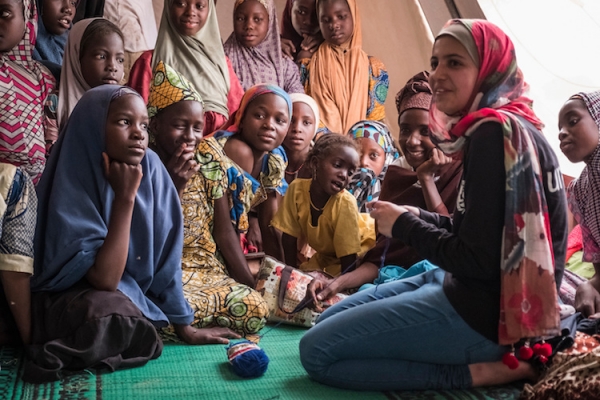In June 2020, UN Women released a report on funding for gender equality and the empowerment of women and girls (GEEWG) in humanitarian programming.
In partnership with the United Nations Population Fund (UNFPA), UN Women launched a study to analyse how women and girls are negatively impacted by disasters and conflict. In particular, the main objective of the paper is to gather evidence and confirm existing funding flows to GEEWG in humanitarian action, including the different levels of funding requested and received, as well as the potential repercussions of funding gaps, with specific regards to the funding for women and girls.
On this point, attempts to gather relevant data concerning the amount of funding requested and received for programming for women and girls have been unsuccessful. More specifically, the usage of different methodologies in each study and the significant overlap between the programming types have prevented aggregation of figures.
Among the most critical sectors such as Gender Based Violence (GBV), reproductive health, and child protection, studies have found that funding coverages range respectively between approximately 32%, 43% and 50%, meaning that the gap is substantial.
In more detail, data was audited and recoded to identify two types of projects. On the one hand, projects whose aim is to tailor their activities to women and girls, which means that they seek to contribute significantly not only by assessing their specific needs, but also by fixing activities to those needs. On the other hand, there are also projects that explicitly target women and girls. The two categories are not necessarily exclusive.
According to data audit and reclassification based on three case studies, namely Bangladesh, Nigeria and Somalia, funding in 2019 for targeted/tailored programming was overstated by between 25% and 30%, while the funding request focusing on women and girls has increased in all the countries over the past few years. Figures in the report clearly show how the amount of funding requested still falls short of the overall request.
As the targeted programmes have the lowest levels of coverage, the lack of funding received versus the increasing funding requested seriously threatens programming for women and girls, which could in turn be lifesaving in the majorities of the situations.
The report also highlights that there has been a significant increase in the amount of funding, but this fact did not translate into an adequate gap filling for women and girls programming and impact.
In addition to this, the report draws key findings and recommendations. On the one hand, despite the increase of the amount of funding requested for programming for women and girls over the past few years in Bangladesh, Nigeria and Somalia, funding for women and girls in these countries still falls significantly short of the overall request. More specifically, these countries face a disproportionate lower amount of funding as compared with the overall response, especially for targeted programs.
Furthermore, the global evidence distinctly indicates that the benefits of gender focus action are sizable and justify more intensive funding for women and girls.
Despite the critical need of additional funding, humanitarian action also faces other limits, such as local contexts in which governments could constrain access to certain types of programming to women and girls. Additionally, funding to local women’s organizations is significantly lacking.
Finally, when comparing findings across countries, prioritization of funding for women and girls needs a consistent focus across the response at all levels and through coordinated efforts.
To know more, please read:
https://www.unfpa.org/sites/default/files/pub-pdf/GEEWG_UN_WomenUNFPA.pdf
Author: Barbara Caltabiano; Editor: Gianmarco Italia







